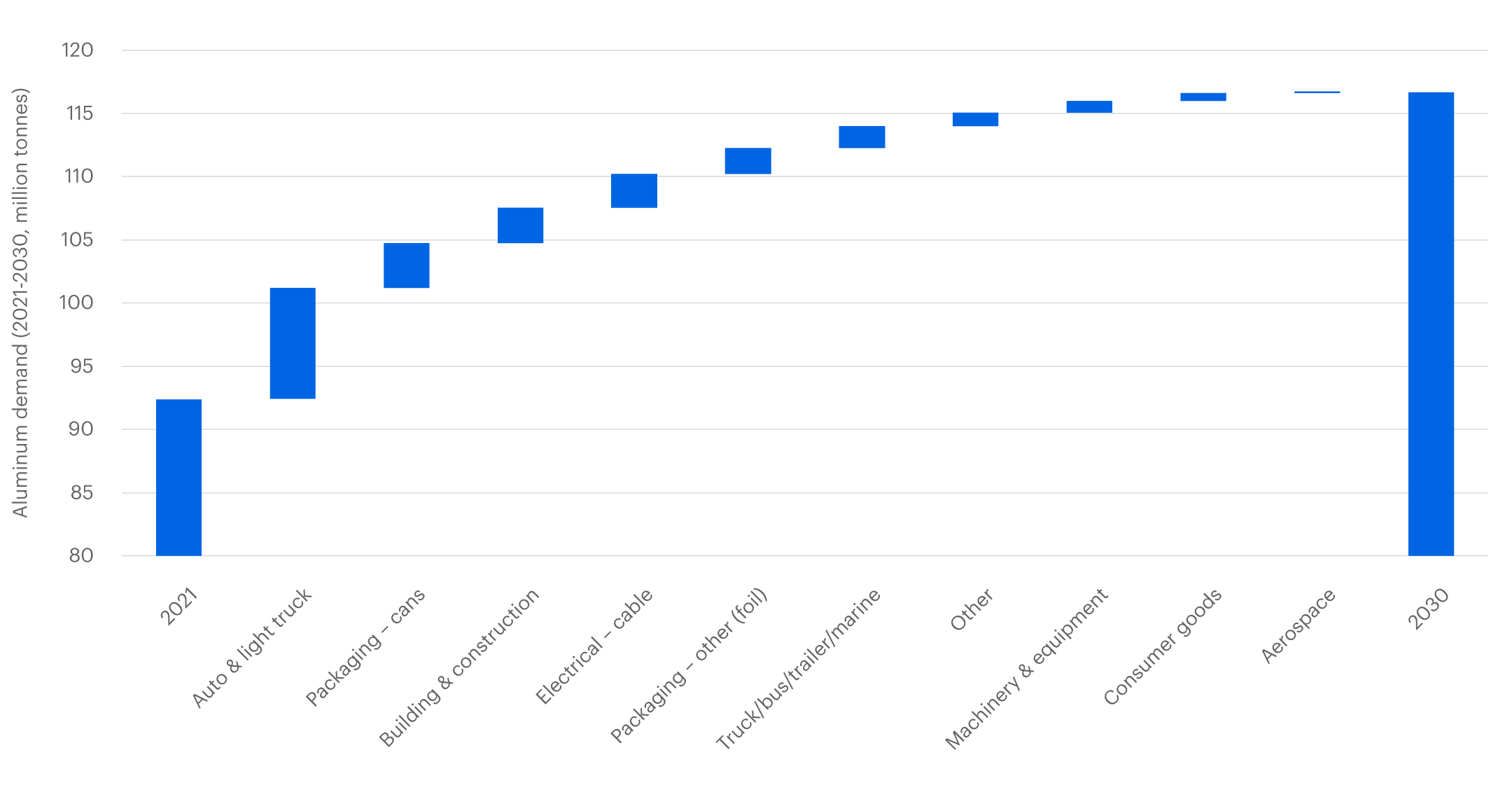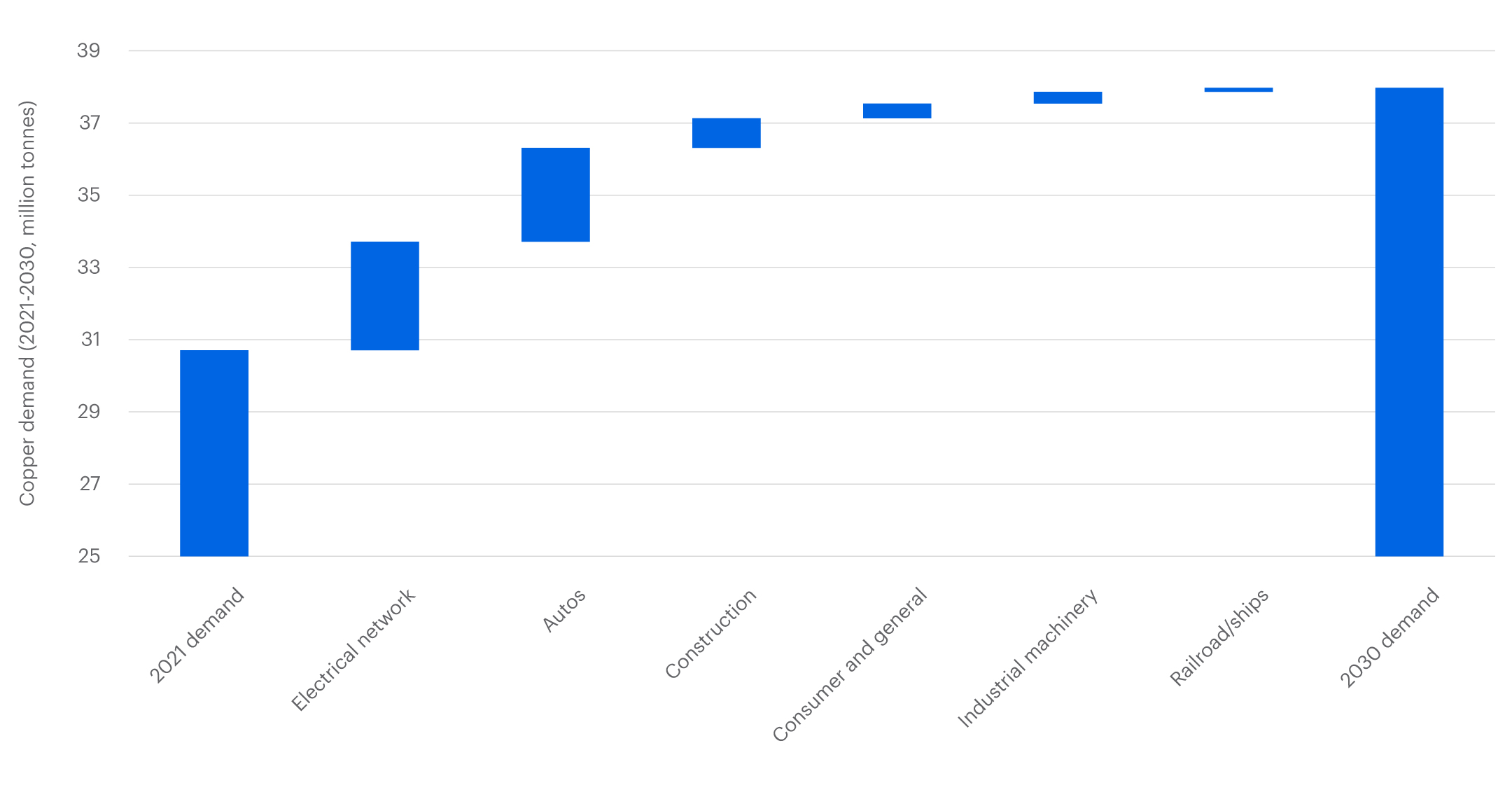How copper and aluminum are powering the energy transition
Morgan Stanley Research
12/05/22Summary: Renewable energy and electric vehicles could accelerate demand for copper and aluminum over the next decade, but supplies may struggle to keep up. Here’s what that could mean for investors.

While renewable energy generates all the headlines, it currently represents only 7% of the world’s total energy output. But as energy demand continues to grow, the world will likely need to increase its use of renewables, particularly as public policy and consumer preferences increasingly favor decarbonization over fossil fuels. Morgan Stanley Research analysts believe the rise of renewable energy will, in turn, strengthen demand for the minerals used to generate and store it—particularly copper and aluminum.
Could this potential growth in demand for the two metals create an investment opportunity? As the world transitions to renewable energy, investors may want to consider the potentially helpful role these commodities can play in their portfolio.
The demand drivers for copper and aluminum are changing
While the energy industry drives a relatively small portion of overall demand for copper and aluminum today, Morgan Stanley Research’s Commodities team predicts that will soon change. Here are a few factors propelling the demand.
- Renewables: Solar and wind energy are more copper- and aluminum-intensive than traditional fossil fuels. Of the 3,600 gigawatts of new energy production capacity anticipated to come online by 2030, Morgan Stanley Research forecasts that 55% will come from solar and 36% from wind, significantly increasing the need for both commodities.
- The energy grid: Transmitting all that extra energy will require a more expansive and productive grid. The International Energy Agency estimates that the world will require up to 112 million kilometers of distribution and transmission lines by 2040, up from 79 million kilometers today.1 Not only will the network need to be expanded, but some of the existing network will need to be upgraded and replaced. Copper and aluminum are among the best conductors of electricity and thus could remain in high demand as renewable electricity use grows.
- Electric vehicles: As the demand for EVs continues to grow, the transportation sector will also require more copper and aluminum. EVs use as much as 4x the copper and 1.7x the aluminum of traditional vehicles on average, not to mention the metals required for the charging infrastructure. EV sales are expected to reach 39 million vehicles per year by 2030—up from 5.4 million in 2021—overtaking internal combustion engine vehicle sales by 2032.
Can global supply keep up with growing demand?
Morgan Stanley Research estimates that demand for aluminum will reach 117 million tonnes by 2030, up 26% from current levels.
But will supply support this growth? The process by which aluminum is extracted from rock or sediment, known as smelting, is energy intensive and could become more costly in an increasingly energy-constrained world with higher electricity prices. Higher electricity costs for the industry could curtail or delay production. As a result, aluminum supply could fall as much as 5.4 million tonnes behind demand by 2030. Long term, the price of aluminum could reach $3,000 per tonne, about 30% higher than current levels, according to Morgan Stanley Research.
Total aluminum demand may increase 26% from 2021

Source: Morgan Stanley Research estimates
Like aluminum, copper demand is also expected to grow, reaching 38.1 million tonnes in 2030, a 24% increase from 2021. Despite short-term oversupply, challenges in adding new mined copper could constrict future supply, such as regulatory uncertainty, permitting challenges, cost pressures, and investor pressure to pay down debt and raise dividends instead of increasing production. As a result, the long-term price of copper could rise 14% from current levels, to around $8,800 per tonne.
Total copper demand may increase 24% from 2021

Source: Morgan Stanley Research estimates
What to consider as an investor
As constrained supply and increased demand potentially push up prices of copper and aluminum throughout the next decade, there may be an opportunity for investors to incorporate exposure to these commodities as part of a diversified portfolio. Consider:
- How supply and demand affect equity prices. Companies in the business of mining, processing, or manufacturing copper and aluminum could see an increase in the value of their stock, as higher prices for the metals would likely translate to higher profits.
- Commodities as an inflation hedge. Historically, commodities, including aluminum and copper, have performed well during periods when inflation rose. Funds that provide broad commodities exposure may help portfolios keep pace with persistent inflation pressures.
While Morgan Stanley Research analysts expect the energy transition to power long-term demand growth for copper and aluminum, they acknowledge risks to their forecast, like lower rates of uptake of EVs or renewable energy sources or competing metals taking market share. Keep in mind, any investment decisions should ultimately reflect individual goals, timelines, and risk tolerance.
The source of this article, Copper, Aluminum and the Energy Transition, was originally published on September 14, 2022.
1. IEA, "The role of critical minerals in clean energy transitions," May 2021